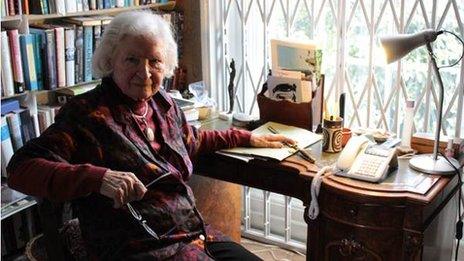Dame Gillian Lynne's top 10 tips for choreography
- Published
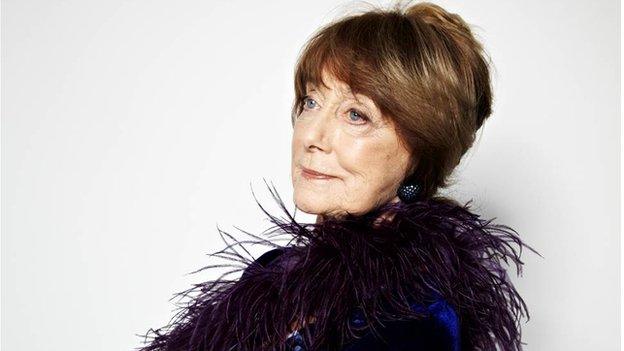
Dame Gillian Lynne is a Bafta and Olivier award-winning choreographer.
Her choreography credits include more than 50 shows including Cats and The Phantom of the Opera.
She received a DBE in the New Year Honours and says that she feels "tops" about becoming a dame.
Here are her top 10 tips for being a choreographer.
1. Understand movement
In my case, I didn't plan to become a choreographer at all. I was in a review and the choreographer walked out and the rest of the company said: "You do it."
I was a dancer before I became a choreographer. You have to understand the element of movement in the core of your being, but you could do that without being a fantastic dancer, I think.
You have to understand that movement and thought are wedded together. You can't just go and dance without a thought in your head. You need to know why you are doing the movements, what they mean to you and what they may mean to others.
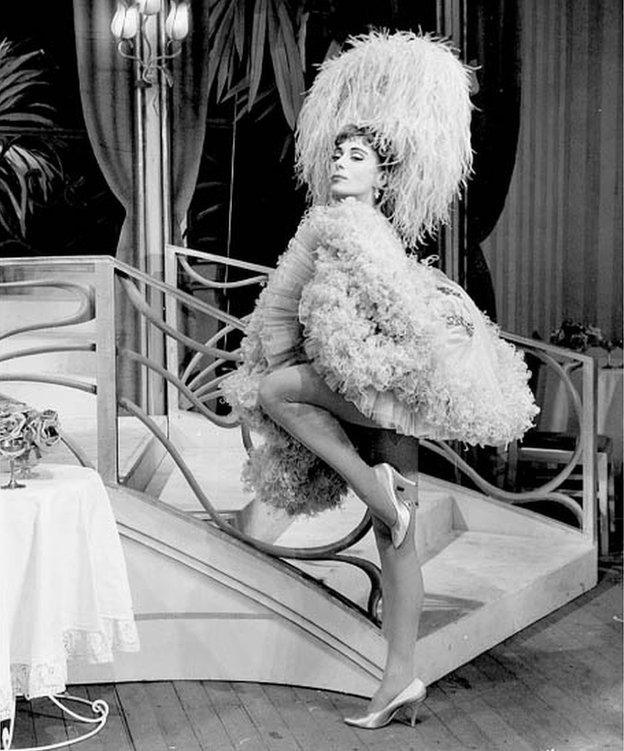
Gillian Lynne as Frou Frou in The Merry Widow
2. Start with the music
Choreographers don't just do steps, they stage the numbers and they stage the songs, so there is a whole big craft to it that people don't ever give credit for.
I usually start with the music. It all differs though. With a ballet it can be all about the subject and the music comes afterwards. Or sometimes you hear a piece of music, fall in love with it and it becomes a ballet.
With a musical, you've got to listen to the score, which has usually already been written by the time the creative team comes on board. You've got to really understand the words and the music and what it is trying to say.
Your task is to weave those two things together in a magical way and present them well. It's a three-part craft if you like.
3. Tell it like it is and don't fear confrontation
You mustn't be afraid of confrontation. You just have to confront difficult people and make their wickedness become obvious. You have to stand very strong and support your creative team.
Put yourself out there as a leader and don't be afraid to confront people. Men don't tend to like confrontation.
Every show I've ever done, if there is a problem I don't mind being the one to sort it out, because I'm not afraid of anyone or anything and I'm truthful. I say it as it is. Usually people prefer that.
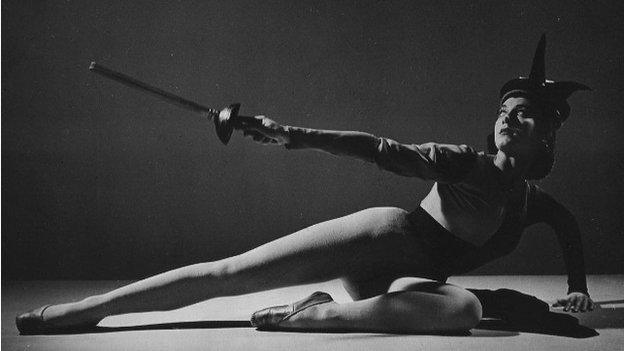
Lynne found success as a dramatic ballerina in the Royal Ballet and was famed for her role as the Black Queen in de Valois' Checkmate
4. Pick your team wisely
Pick your team yourself if you can. Ideally you want to surround yourself with a team that you like, who like you, who can take you when you are at the end of your tether and perhaps being a bit too tough.
It's like creating a family and it's the same with the cast. There's quite a lot of jealousy and stuff that goes on and I don't think that helps anybody.
You have to make sure people are bonded and friends by the end of the first week of rehearsals. You have to create a company who like each other, get on and trust one another.
5. Be firm but loving when things go wrong
If a dancer isn't getting something quite right, fortunately I can still show it and then you just go on and on and weigh someone down until they get it. There aren't any shortcuts.
Sometimes you have to make people feel like they have to fight their body or enhance the situation until their body picks it up and gets the instinct for it. It never runs smoothly and that's why it is so important for a company to become friends in the first week.
Because everybody has bad patches, everyone has a scene or a dance solo they find difficult to do. Some people sail through things wonderfully, but when they don't you have to just be there for them and be rigidly firm and very loving all at the same time.
6. Be honest and show people you can do it
Very few people get a show like Cats, it's a one-off. It was a miracle in a way that we made that show.
It is essential to make sure your collaboration with designers and composers is very honest and very open.
I think it is really good if people do want to go into choreography. It's the thing that really put me on the map. It's no good just wanting to be something in life, you have to do something to show you could do it.
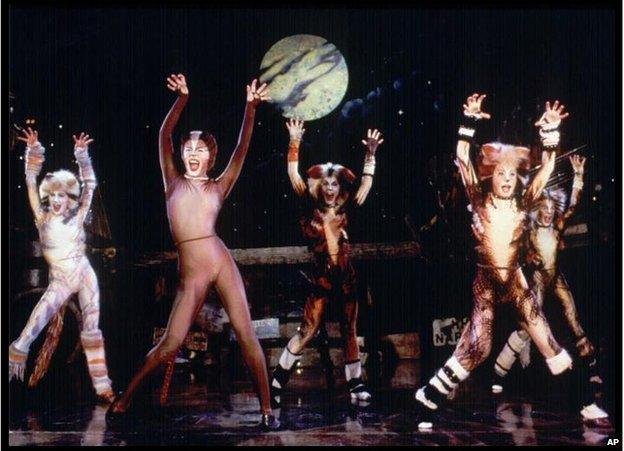
Lynne won an Olivier award for her choreography on Cats - the Andrew Lloyd Webber musical ran for 21 years in London and 18 on Broadway
7. Marry someone who shows an interest in your work
My marriage is almost the most important thing in my life. I'm very lucky. I'm married to a man who is 27 years younger than me and we have a lot in common.
I met Peter [Land] on the first day of rehearsals for My Fair Lady, which I was staging for Cameron Mackintosh. He was the most beautiful man I have ever seen. We took one look at each other and that was it.
It's lovely to be with someone who is in the same business. It's a very happy household because we are interested in each other's work.
8. Accept that being successful may require sacrifices
My profession has ruined my right foot. I sprained it 37 times in my career, and in the end one day a bone just popped out.
I've also got two hip replacements. When I go through the airport I always tell them: "There's no point you bothering me. I've got two metal hips and a metal foot!" I sound bells all over the place.
My family is me, my husband and the dog. I'm afraid I don't think I could have had the career I've had and been as successful if I had had children. Maybe these things happen for a reason.
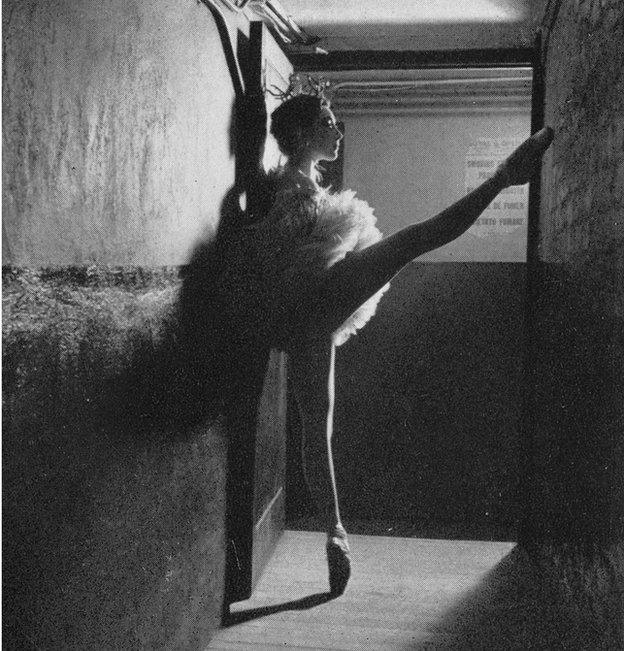
Lynne was talent-spotted by and asked to join Sadler's Wells Ballet during World War Two
9. Keep your true judgement open
Keep your true judgement open. Whatever opportunities come up, keep your own judgement about how you feel about the art, what you feel about showbusiness and the world at that time.
Keep an interest in the news and current affairs and try and keep up with what is going on in the world because it will affect what you do.
10. Avoid Botox and love what you do
Age certainly hasn't been a problem in my career. I'm 88 now, I've got all sorts of exciting projects coming up this year and I'm very lucky.
I don't do all that Botox stuff, can't stand it, don't even believe in it. I think people look dreadful when they've done it, so I don't do that.
I think I look like an ancient old squiffle at the moment, but the secret to staying young and being happy is to do with loving what you do and loving the person you are with - simple as that!
- Published28 March 2014

- Published15 March 2014

- Published4 January 2014

- Published11 January 2014

- Published7 December 2013
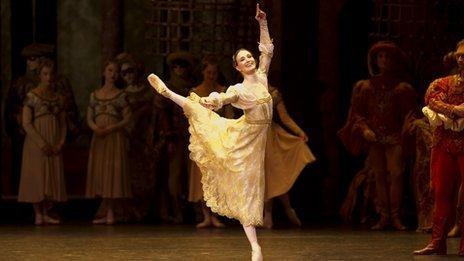
- Published14 December 2013

- Published22 December 2013

- Published30 November 2013

- Published23 November 2013
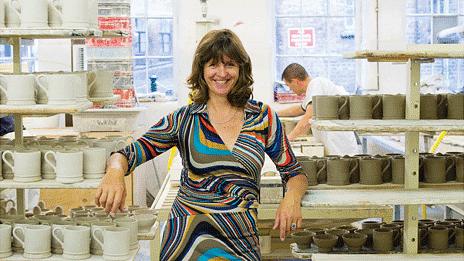
- Published16 November 2013
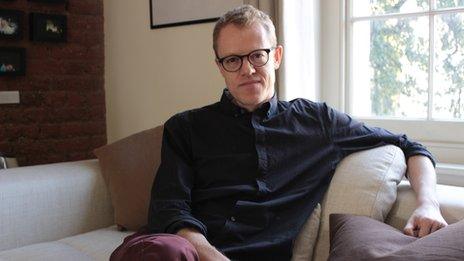
- Published9 November 2013
